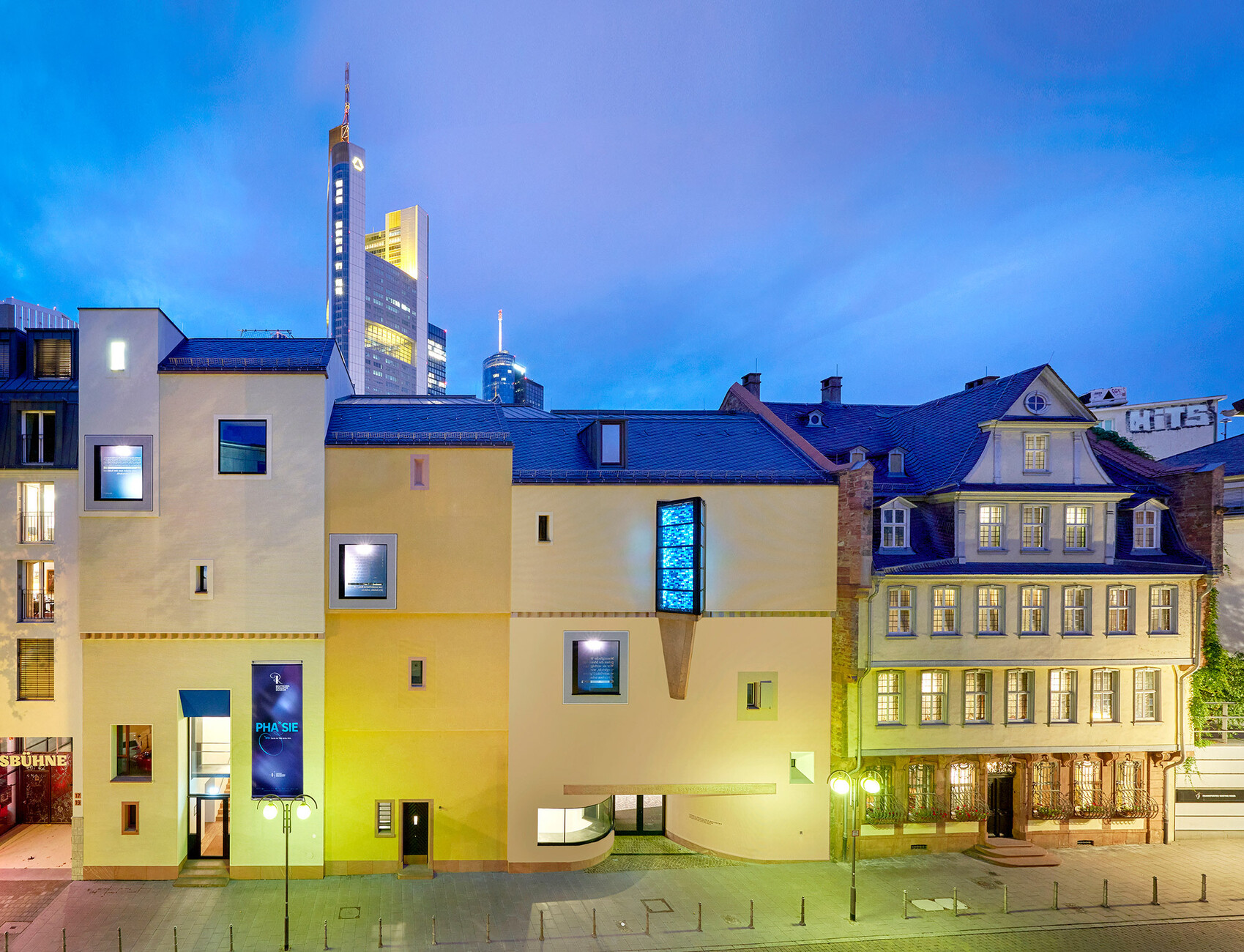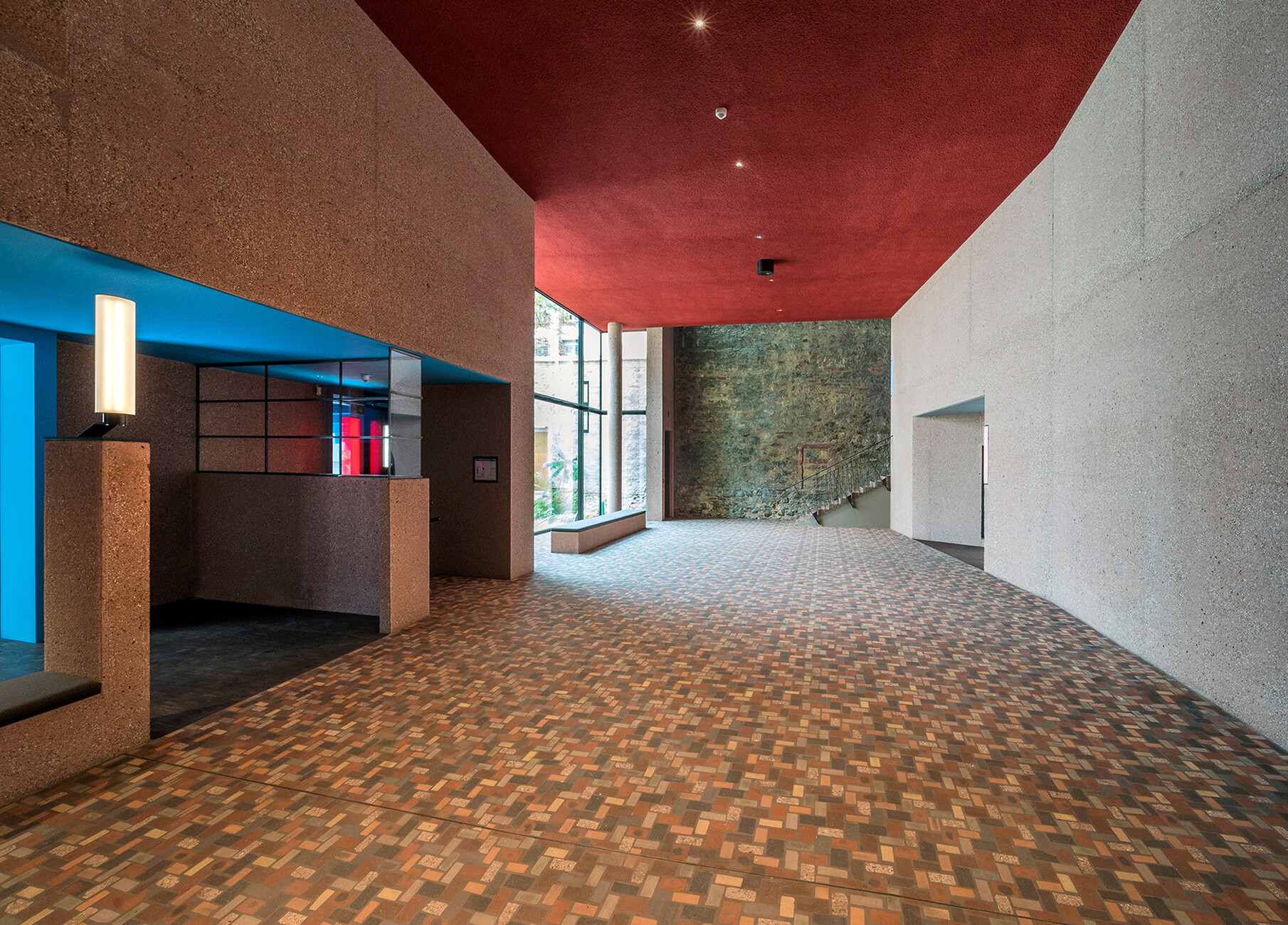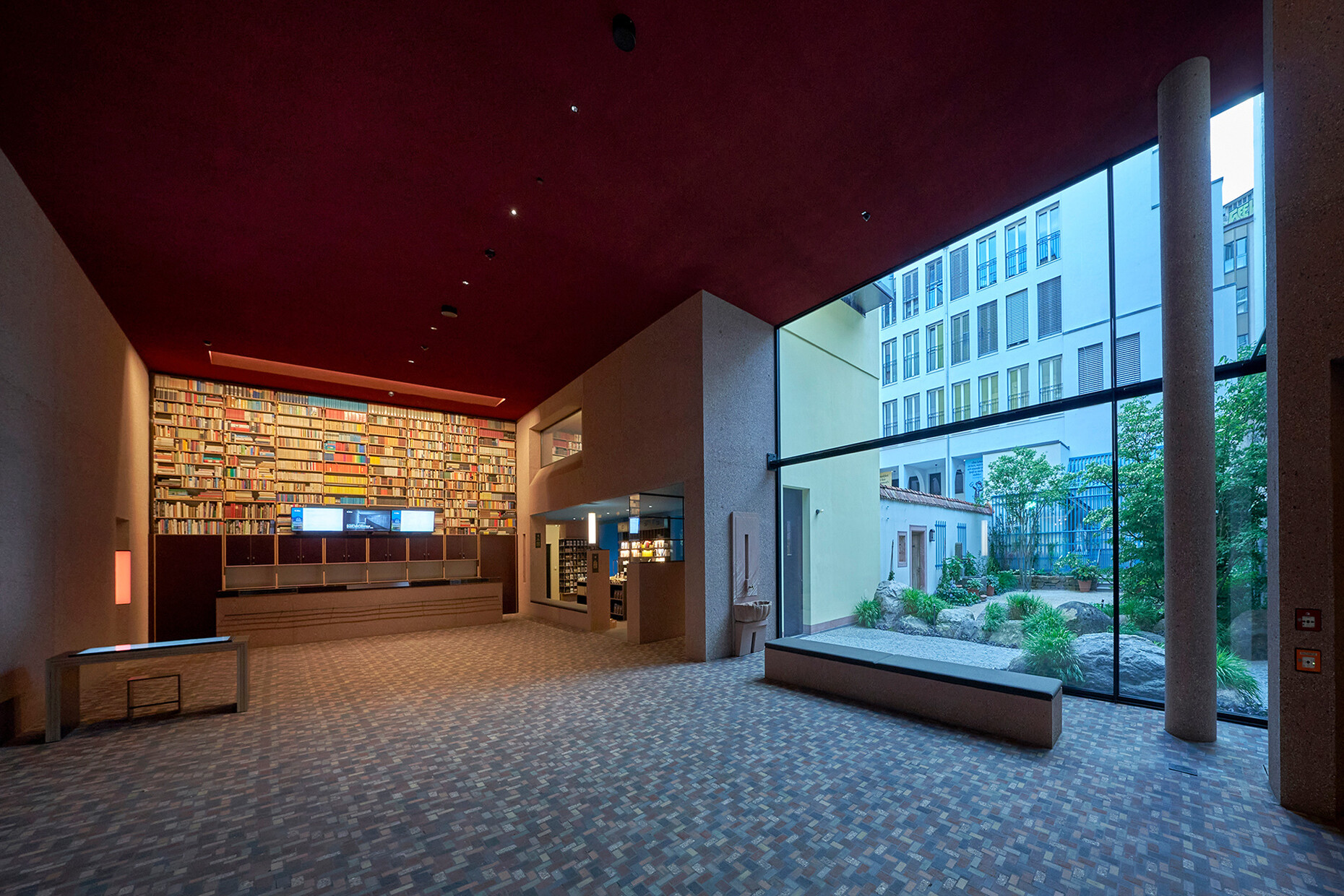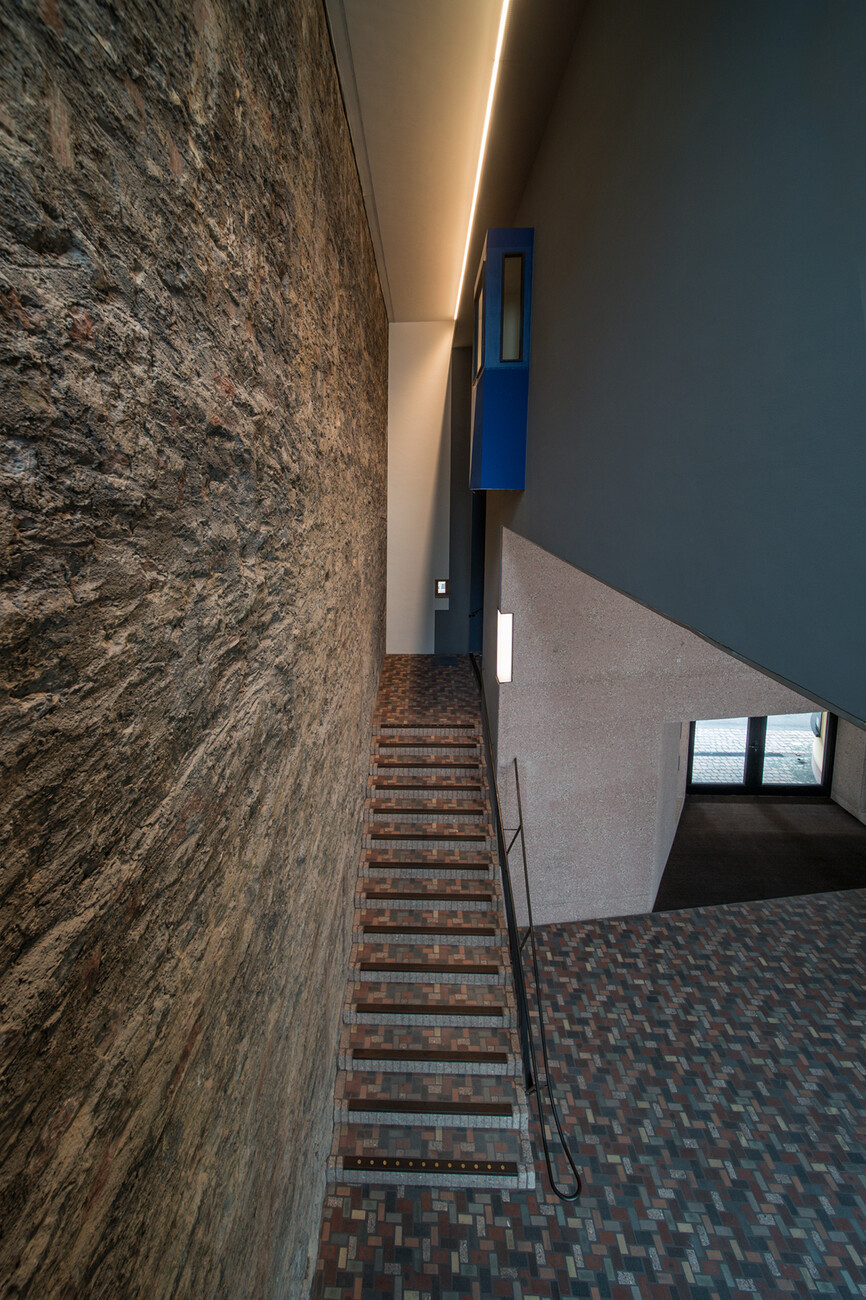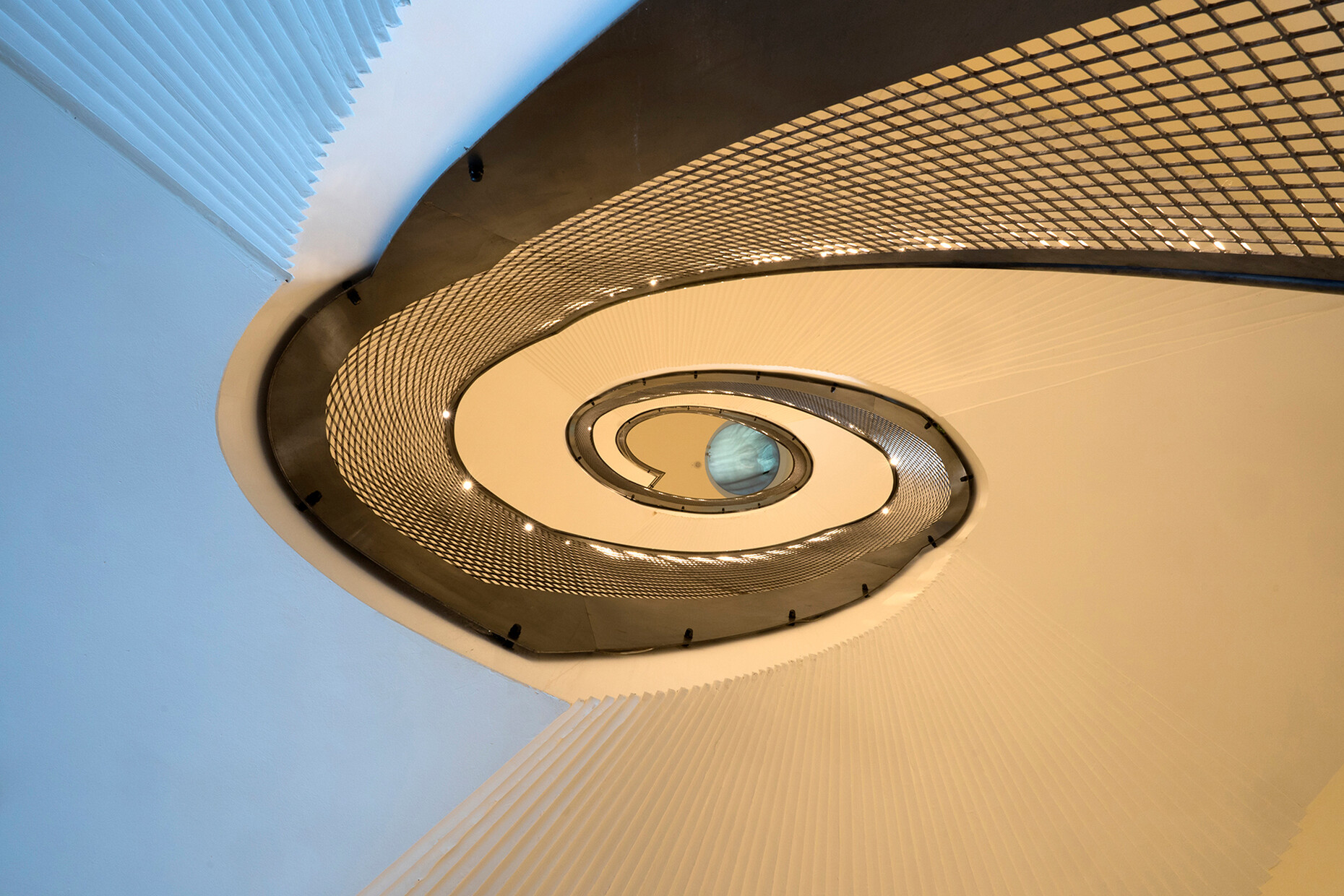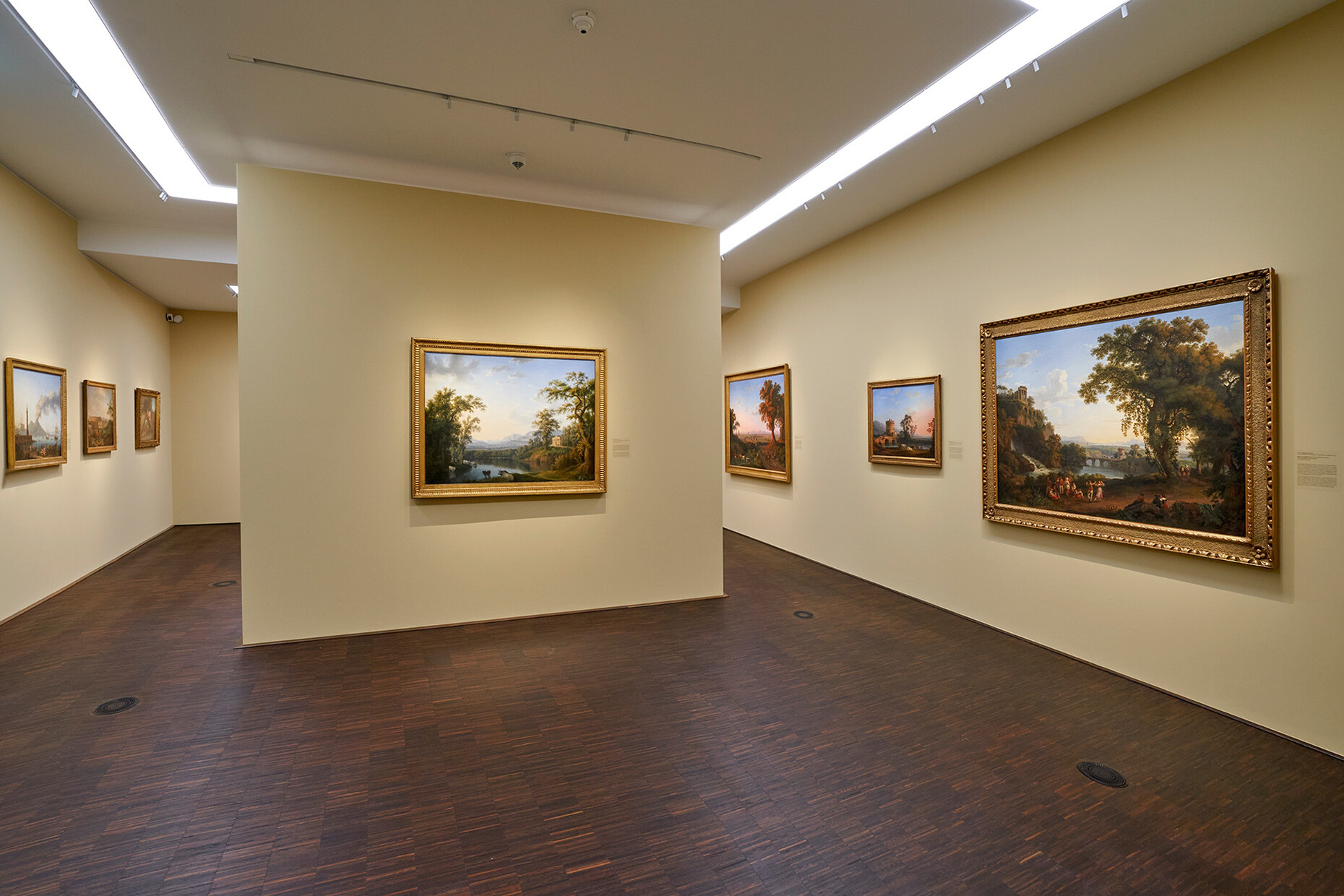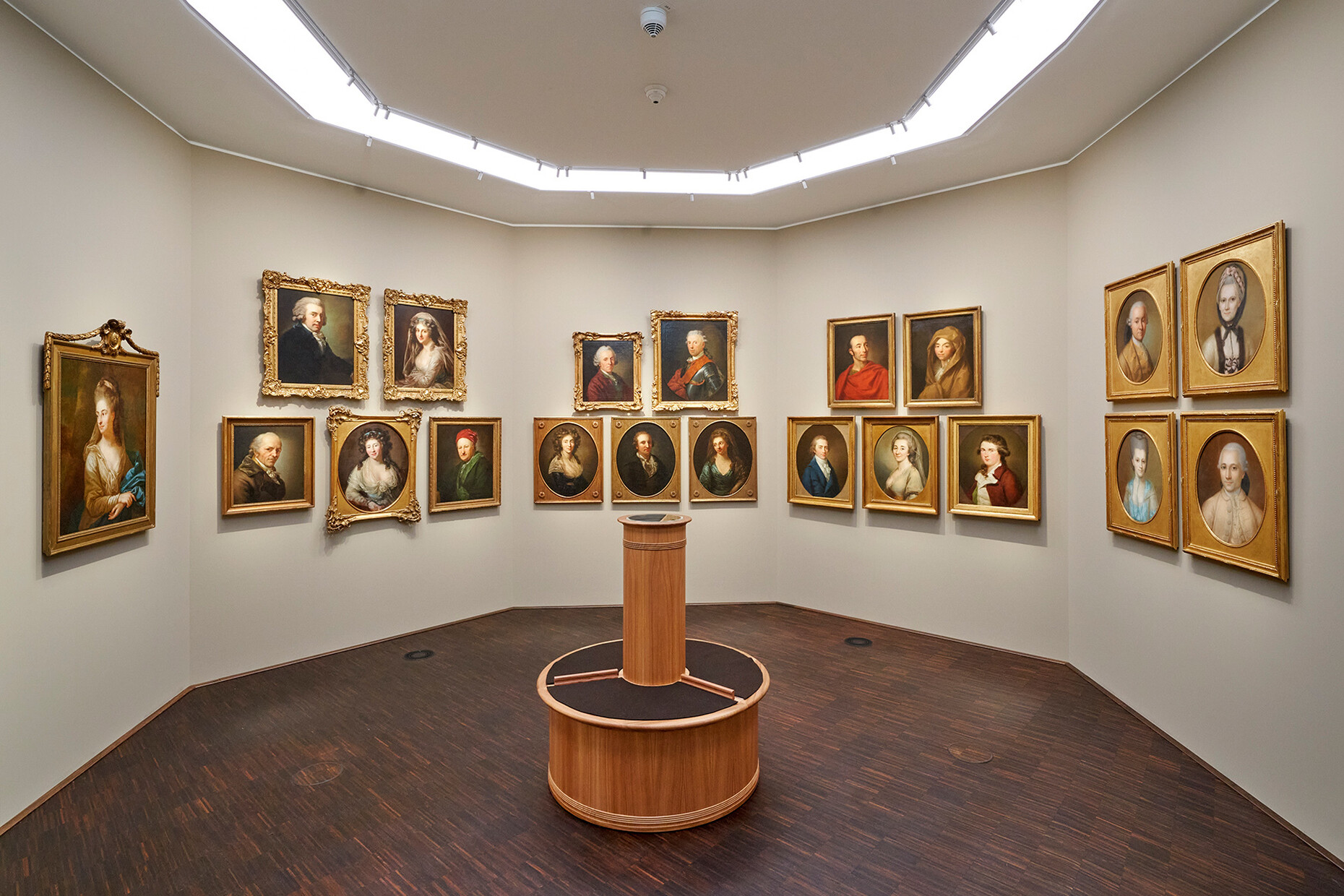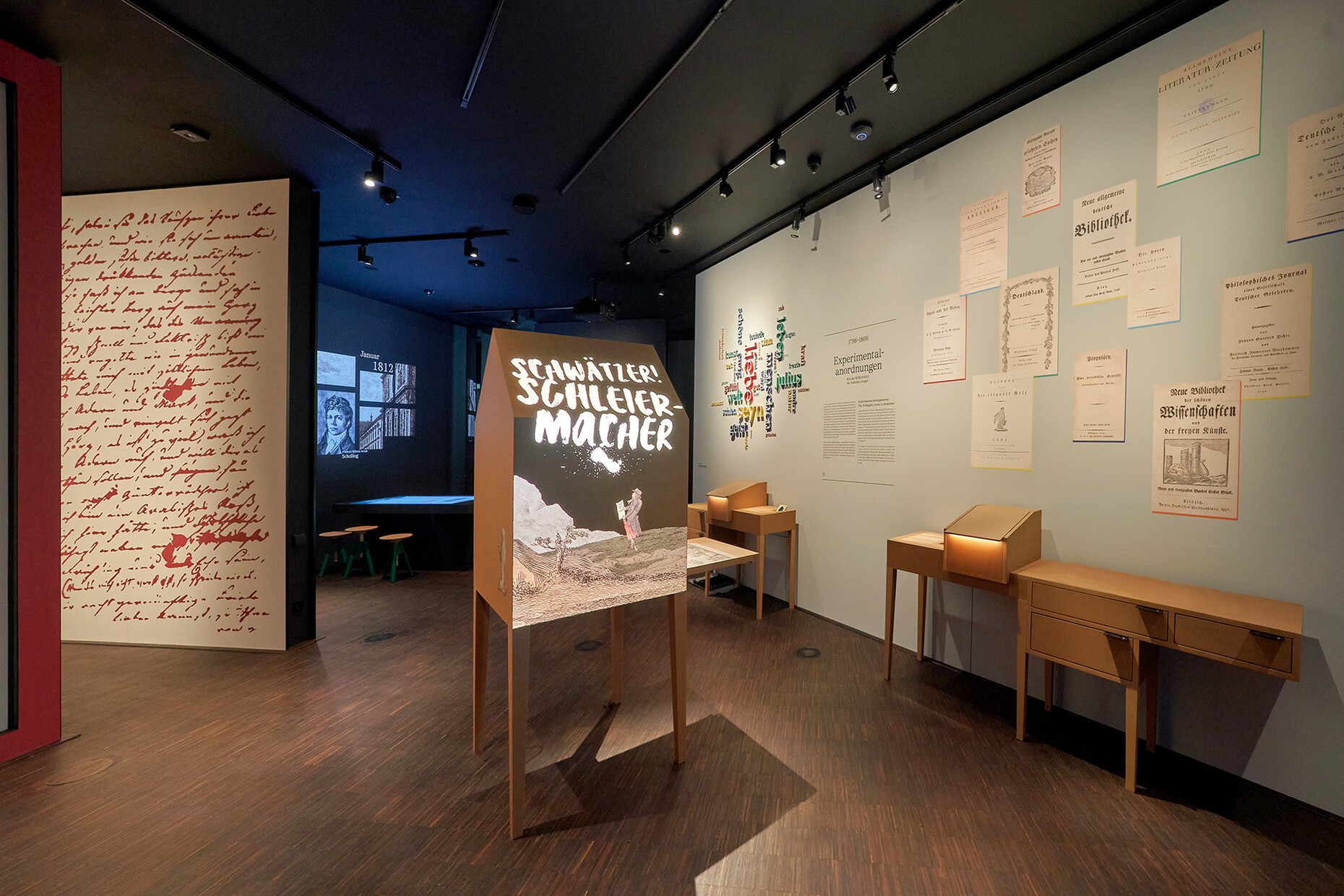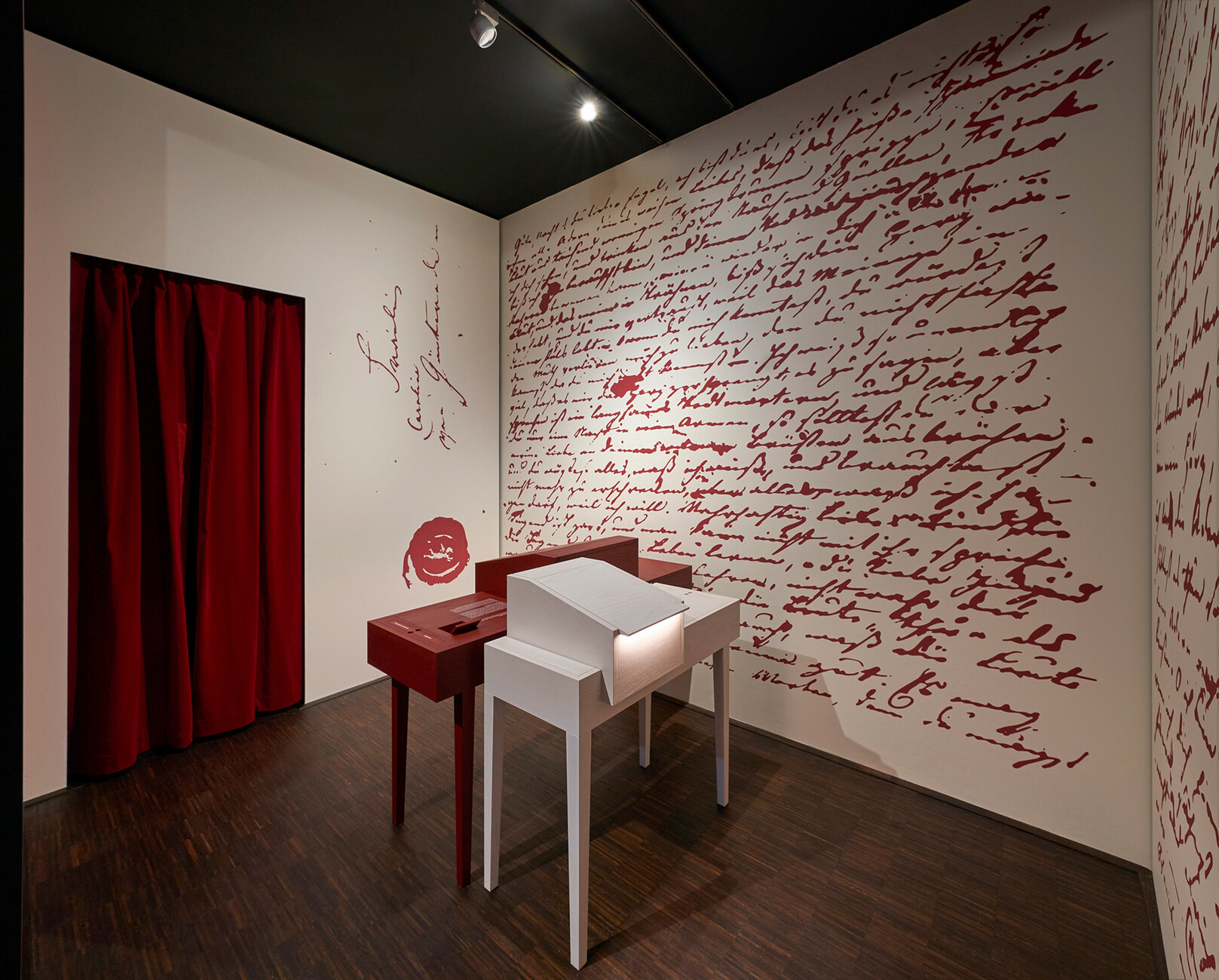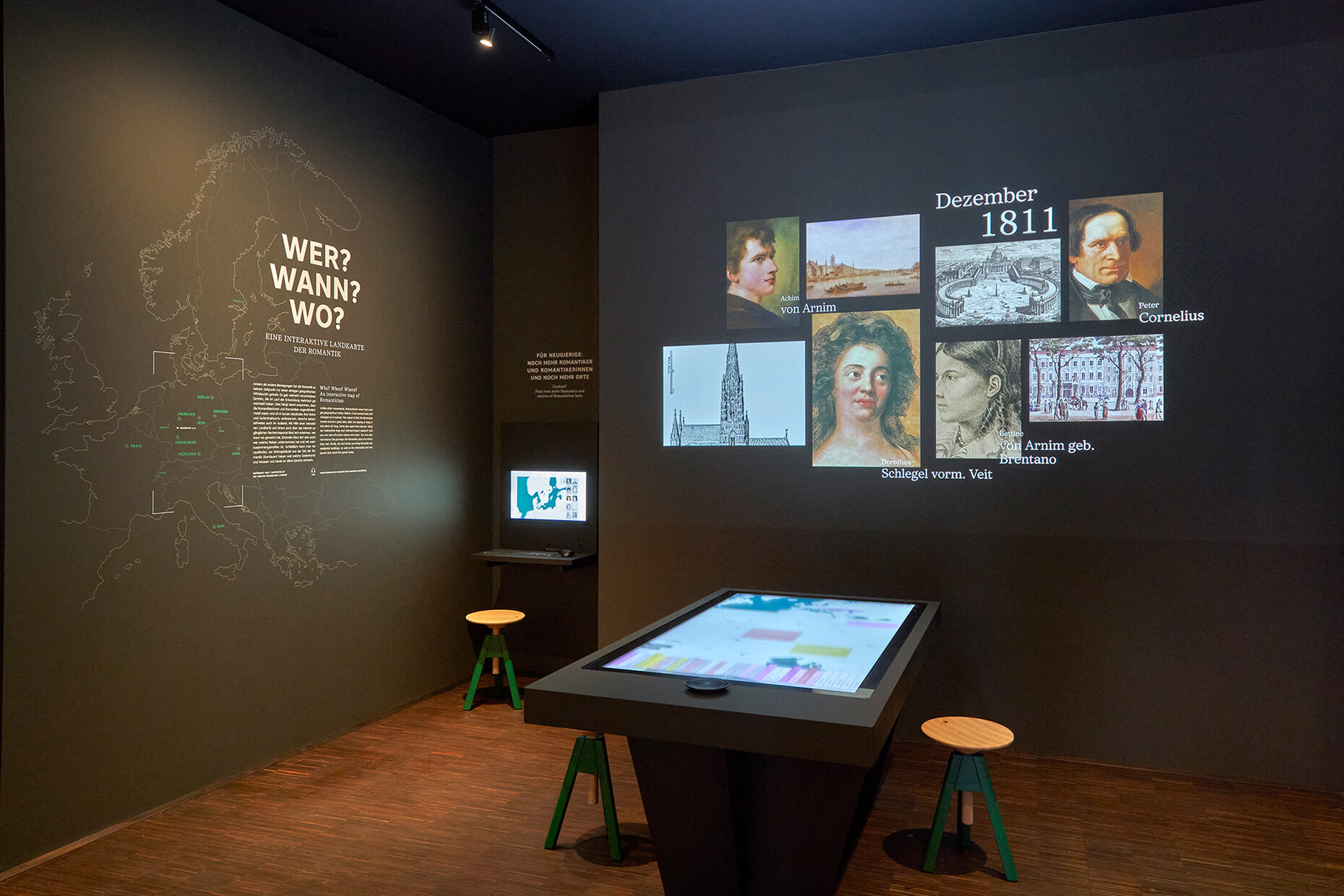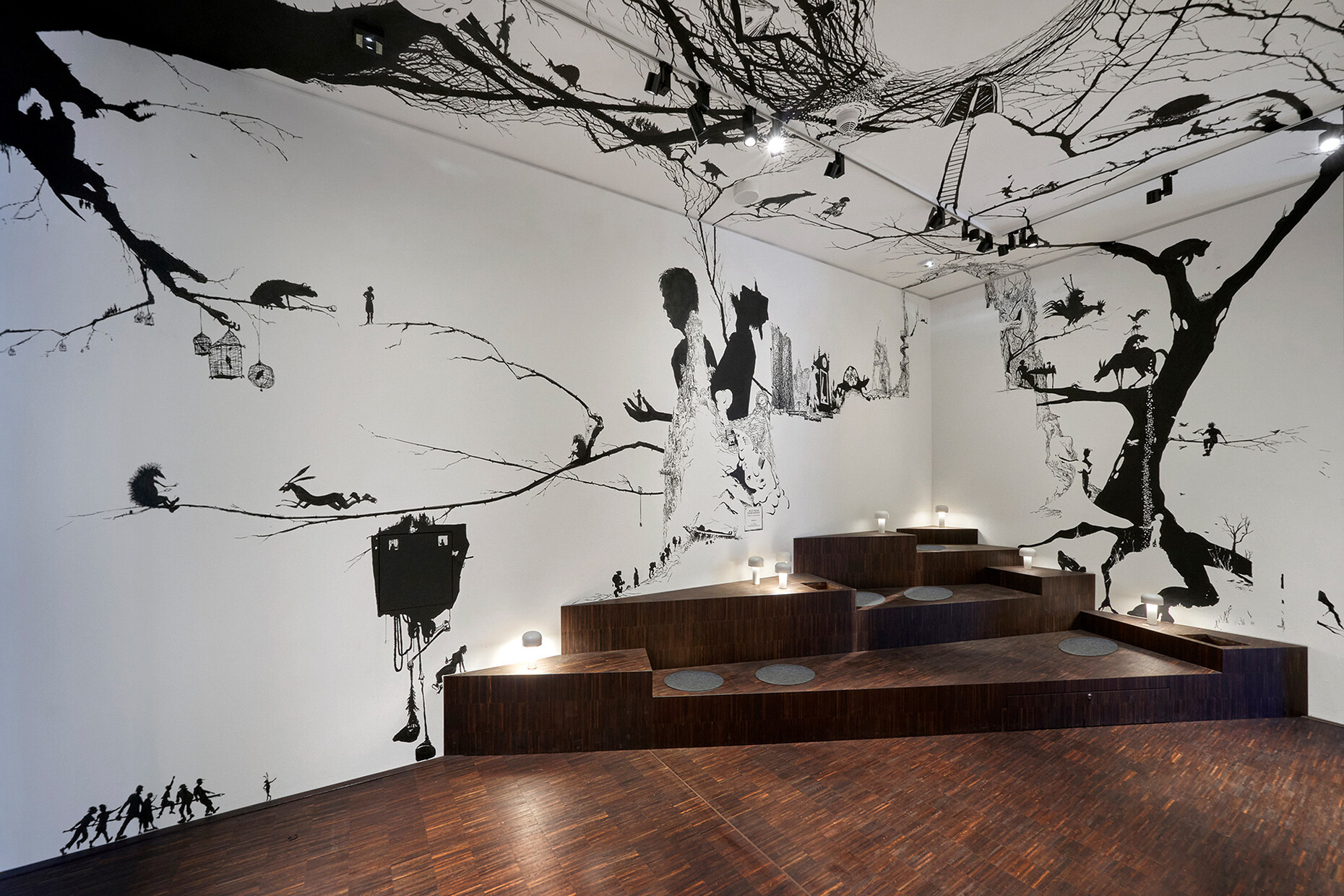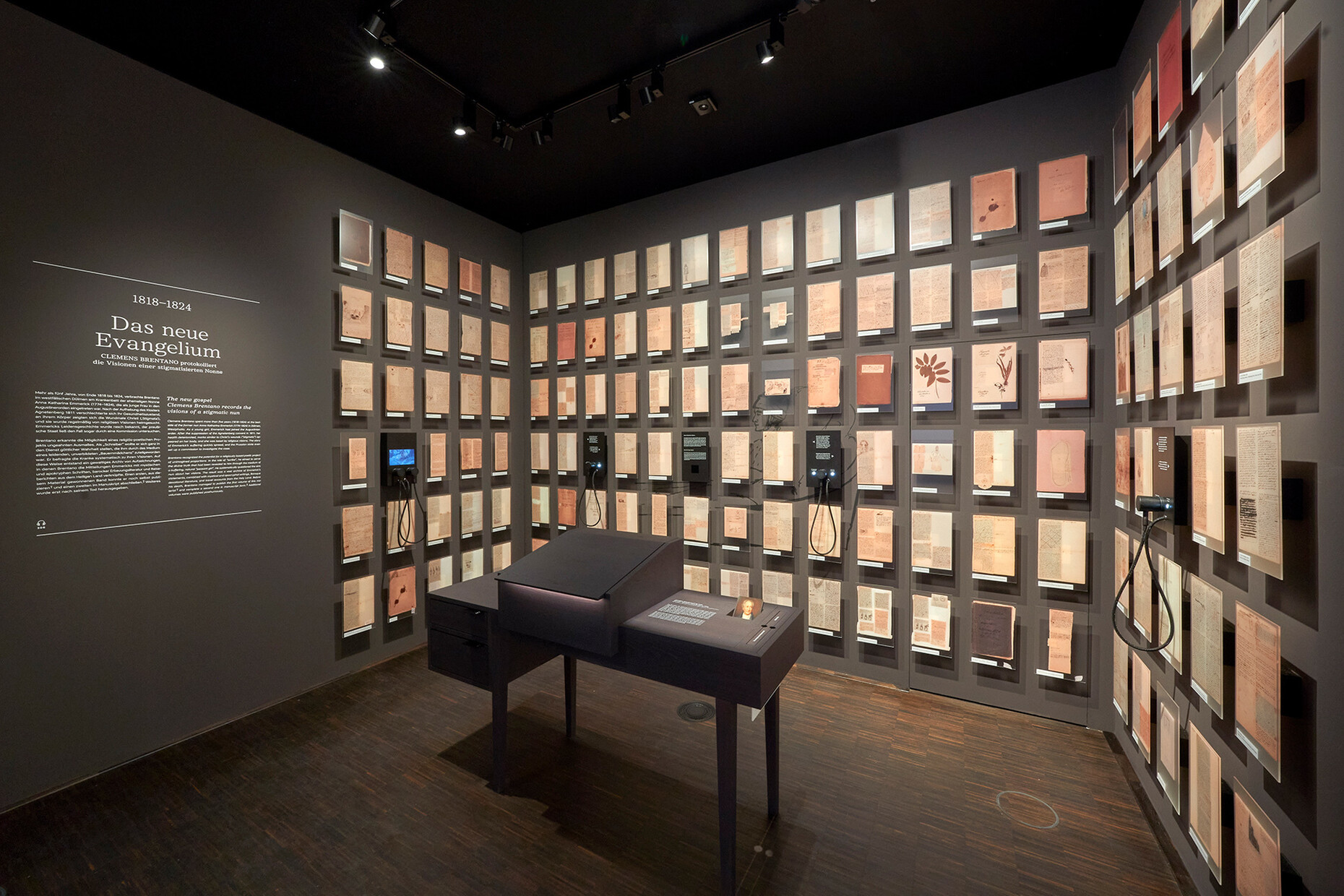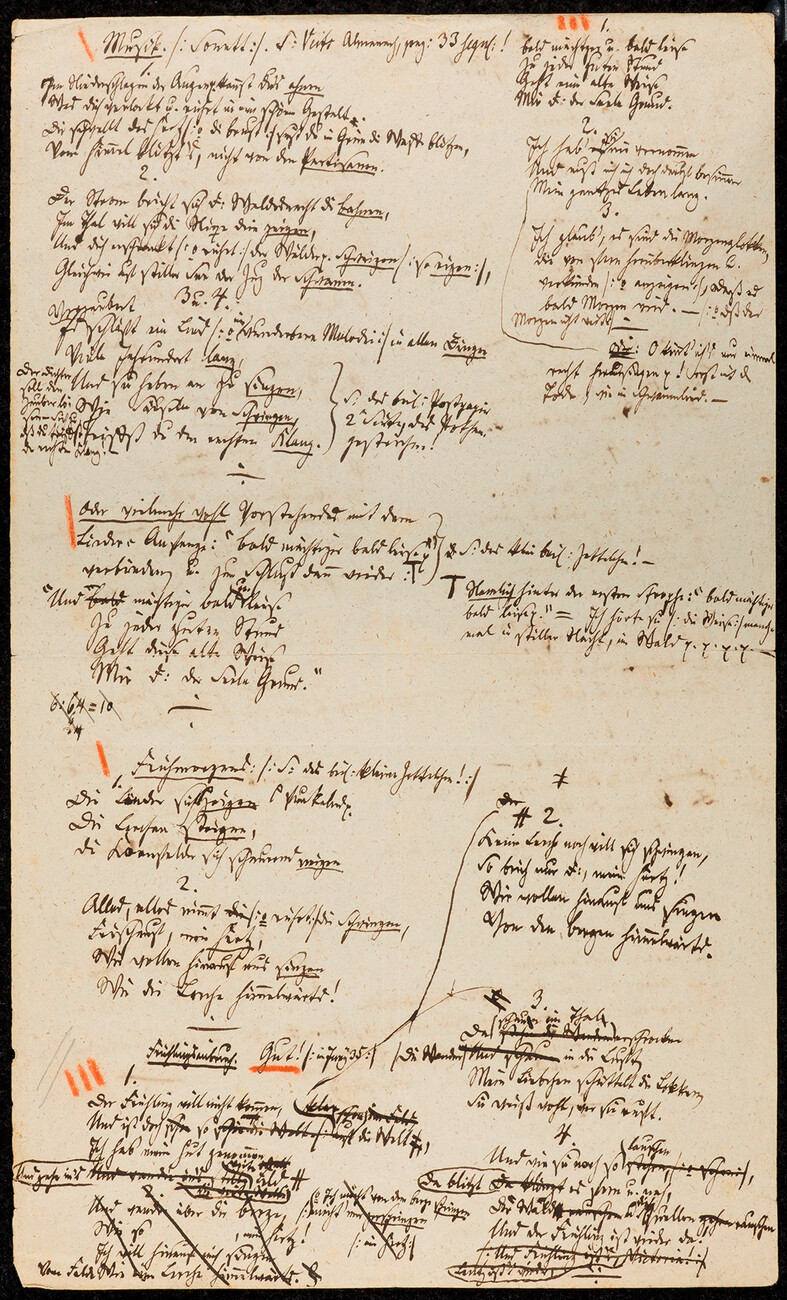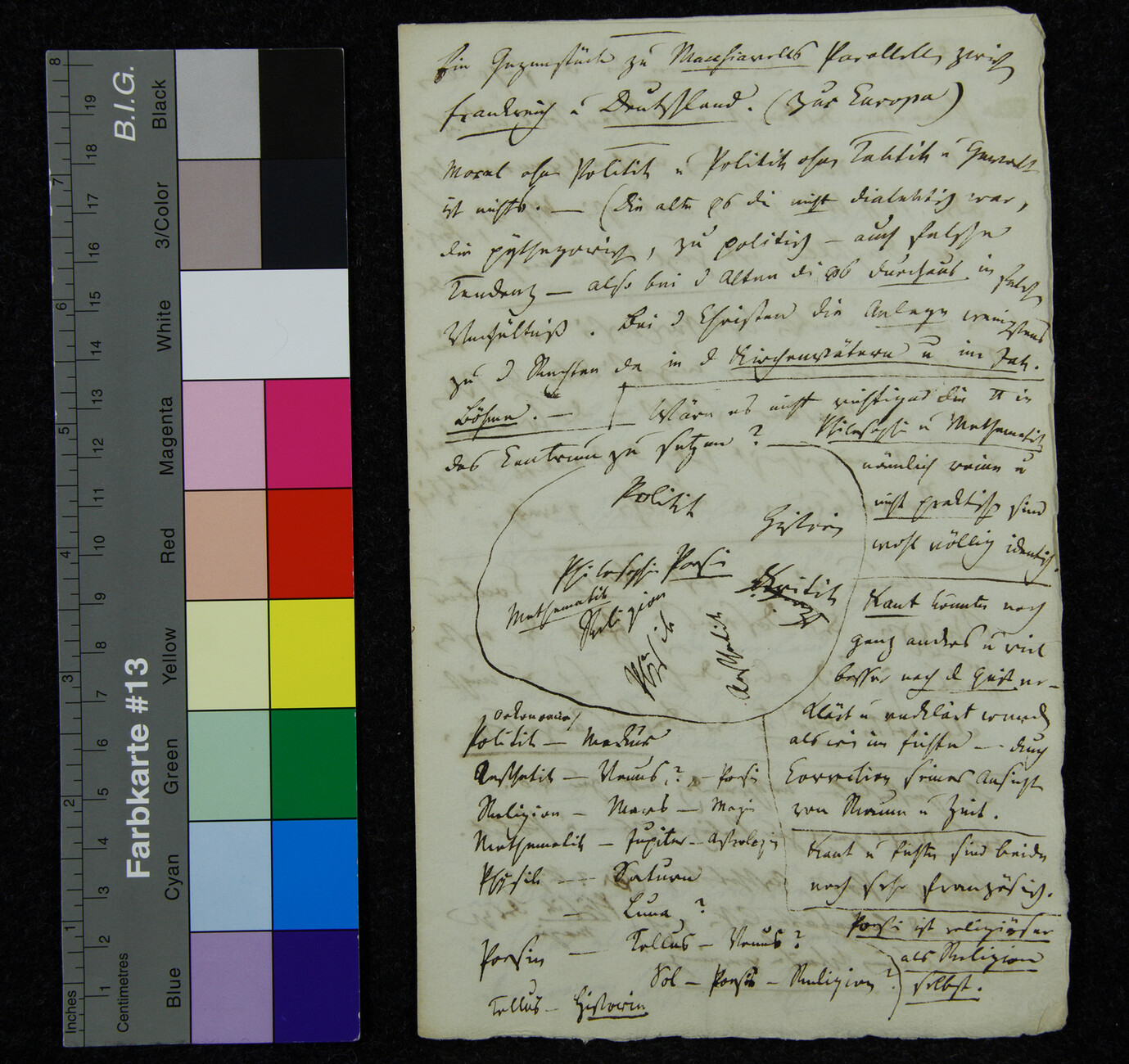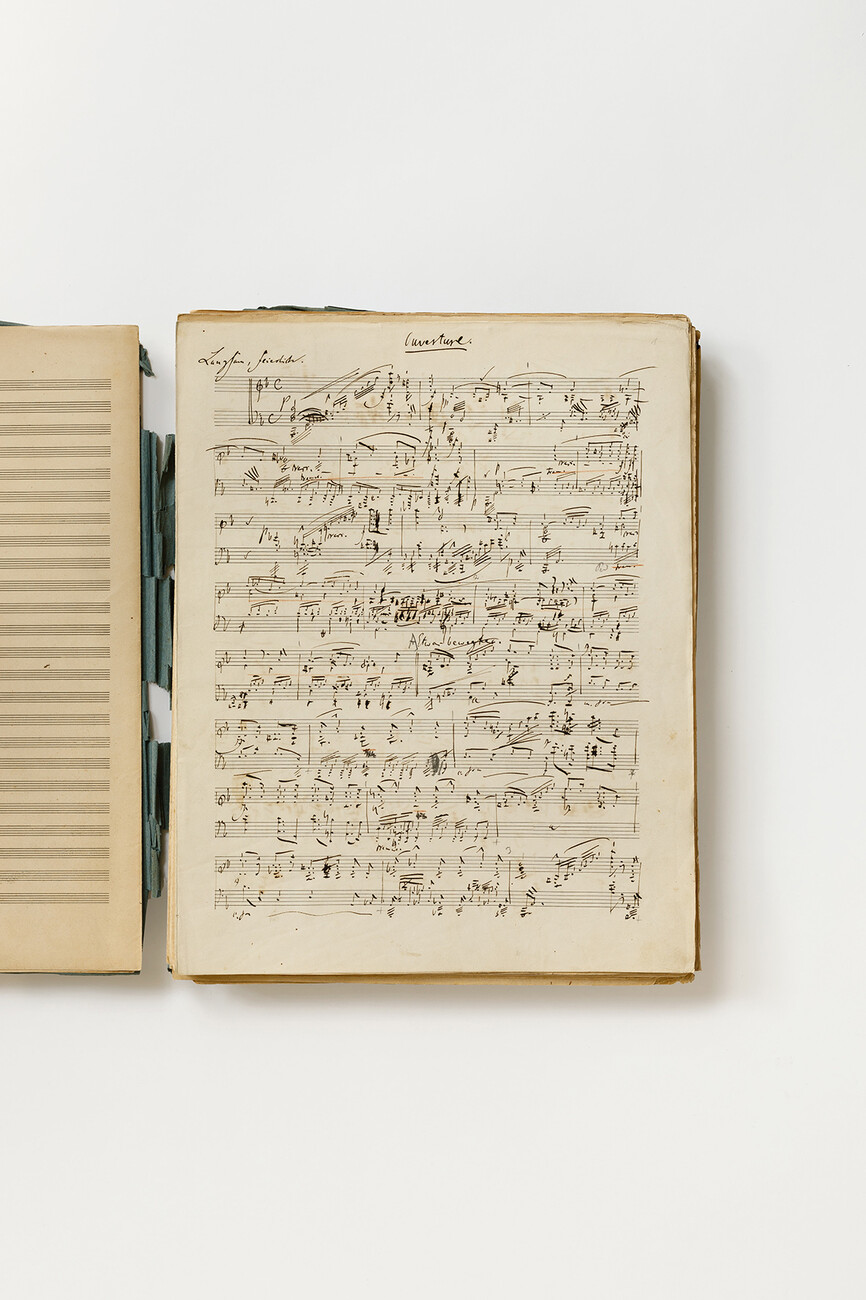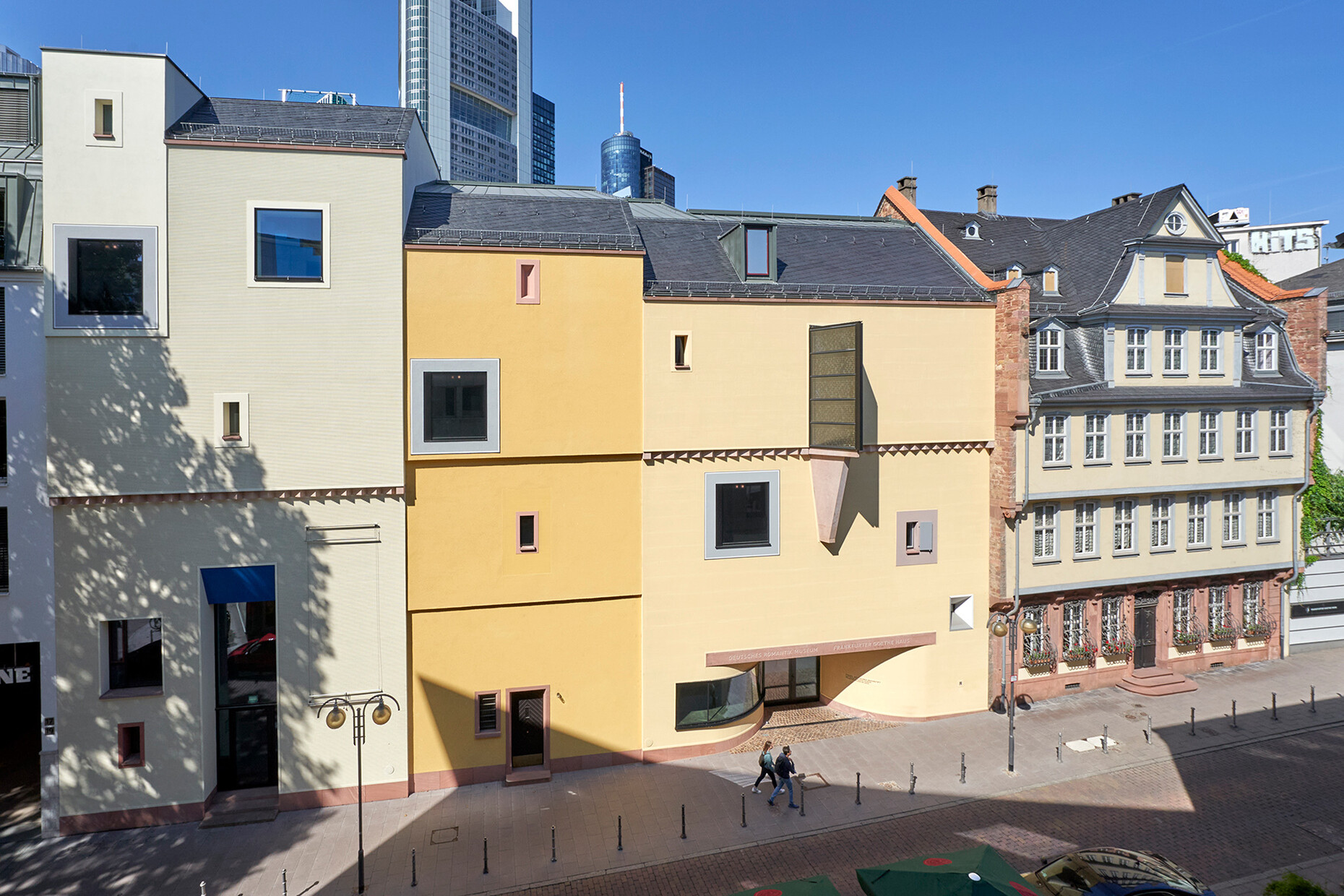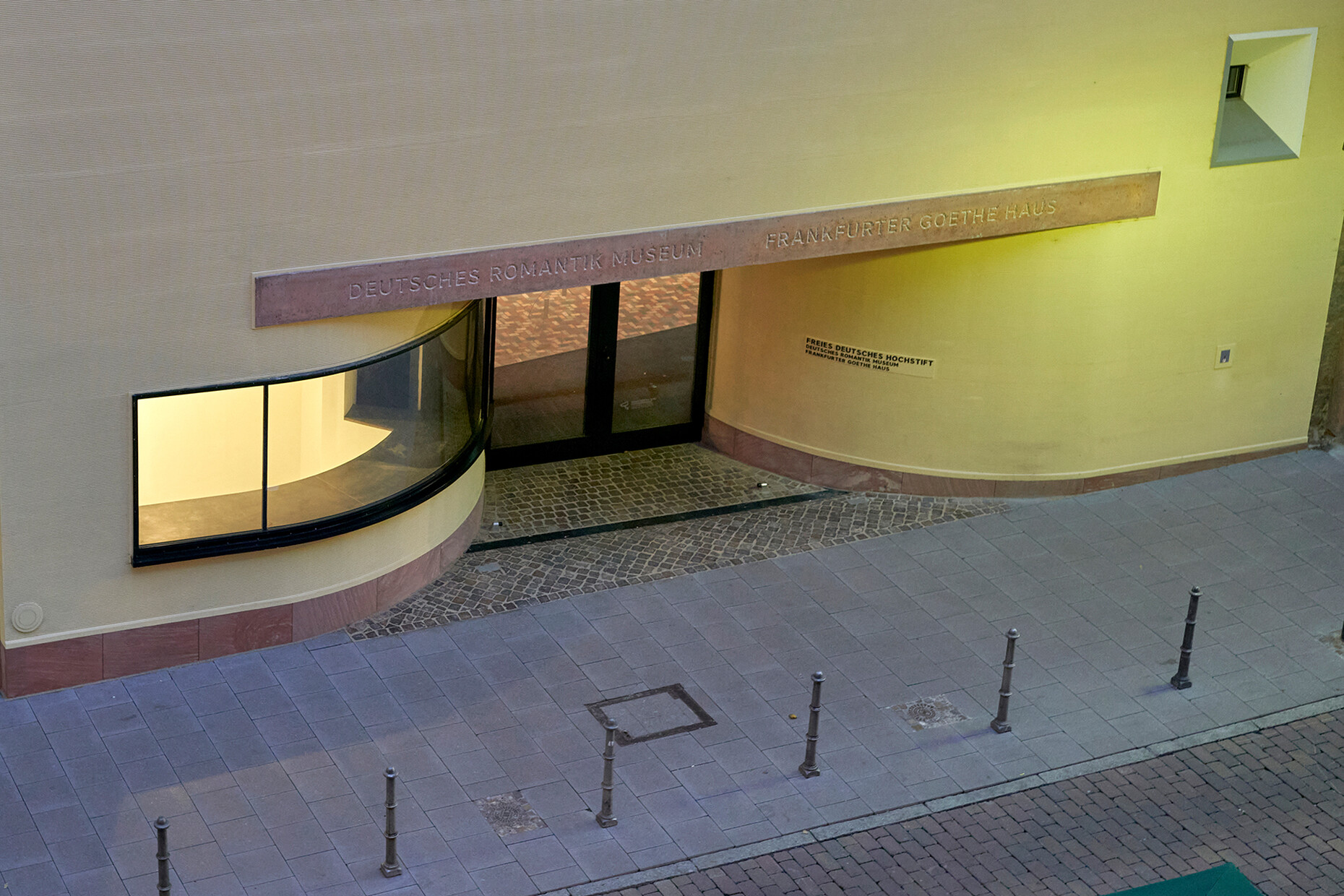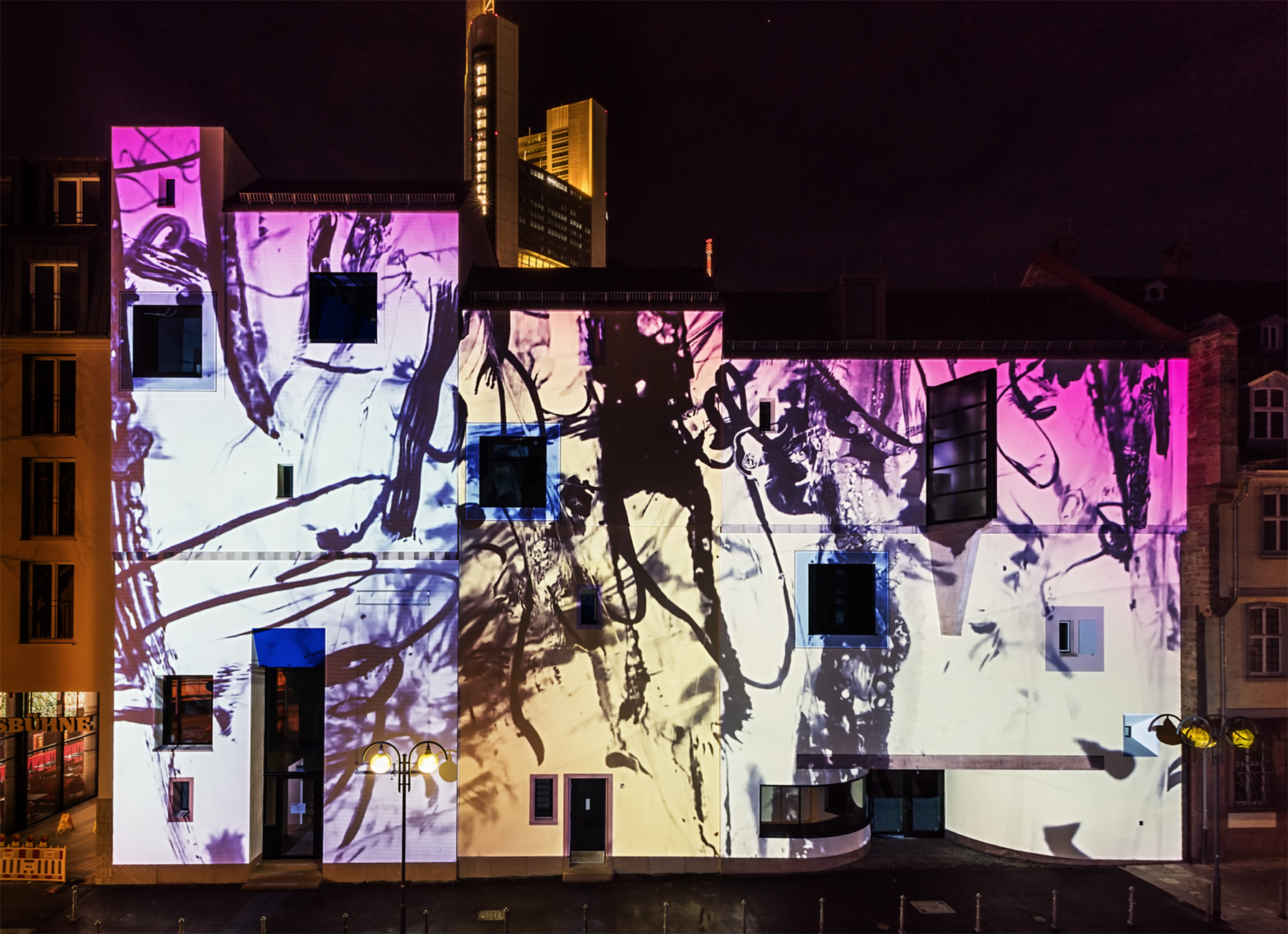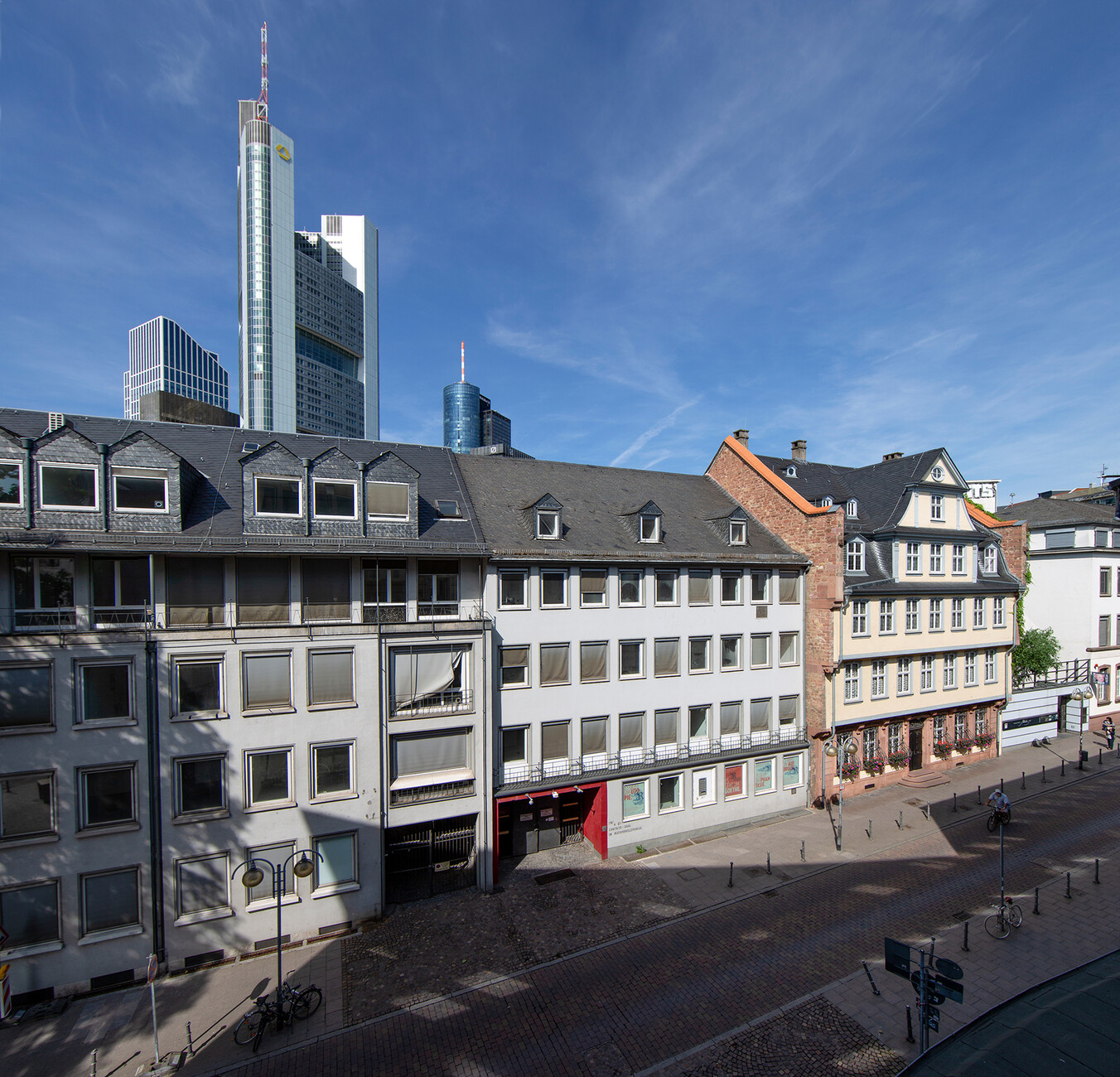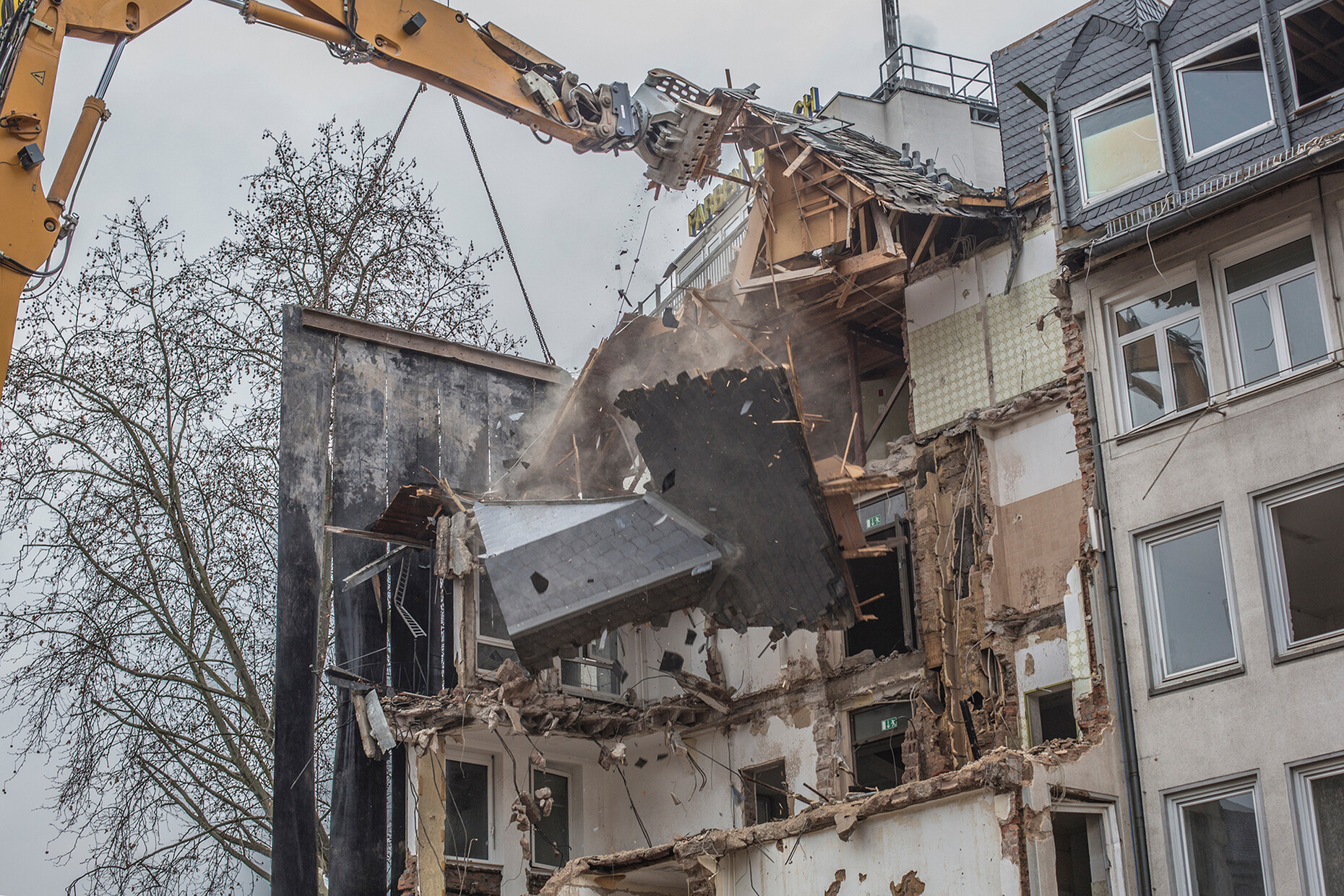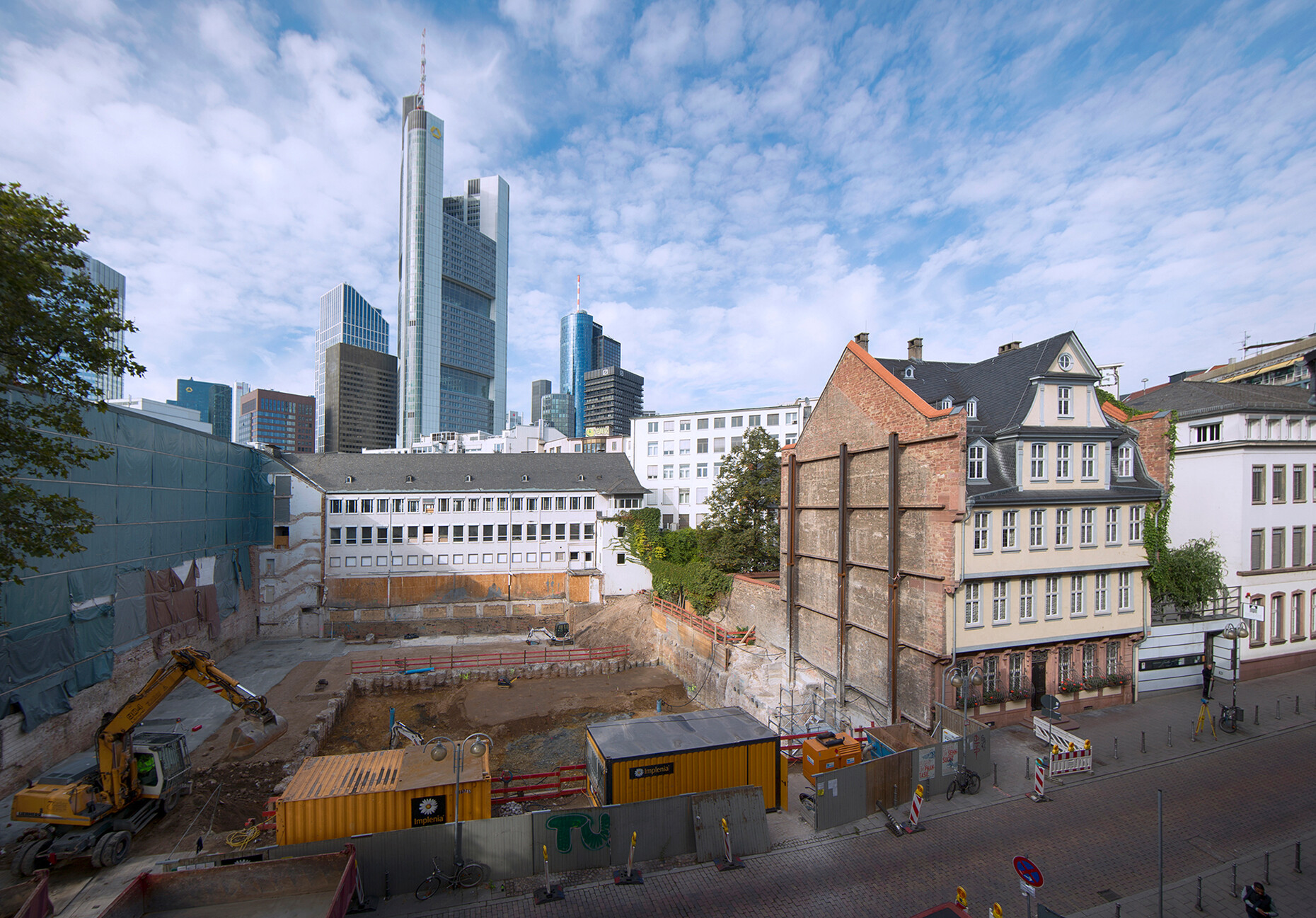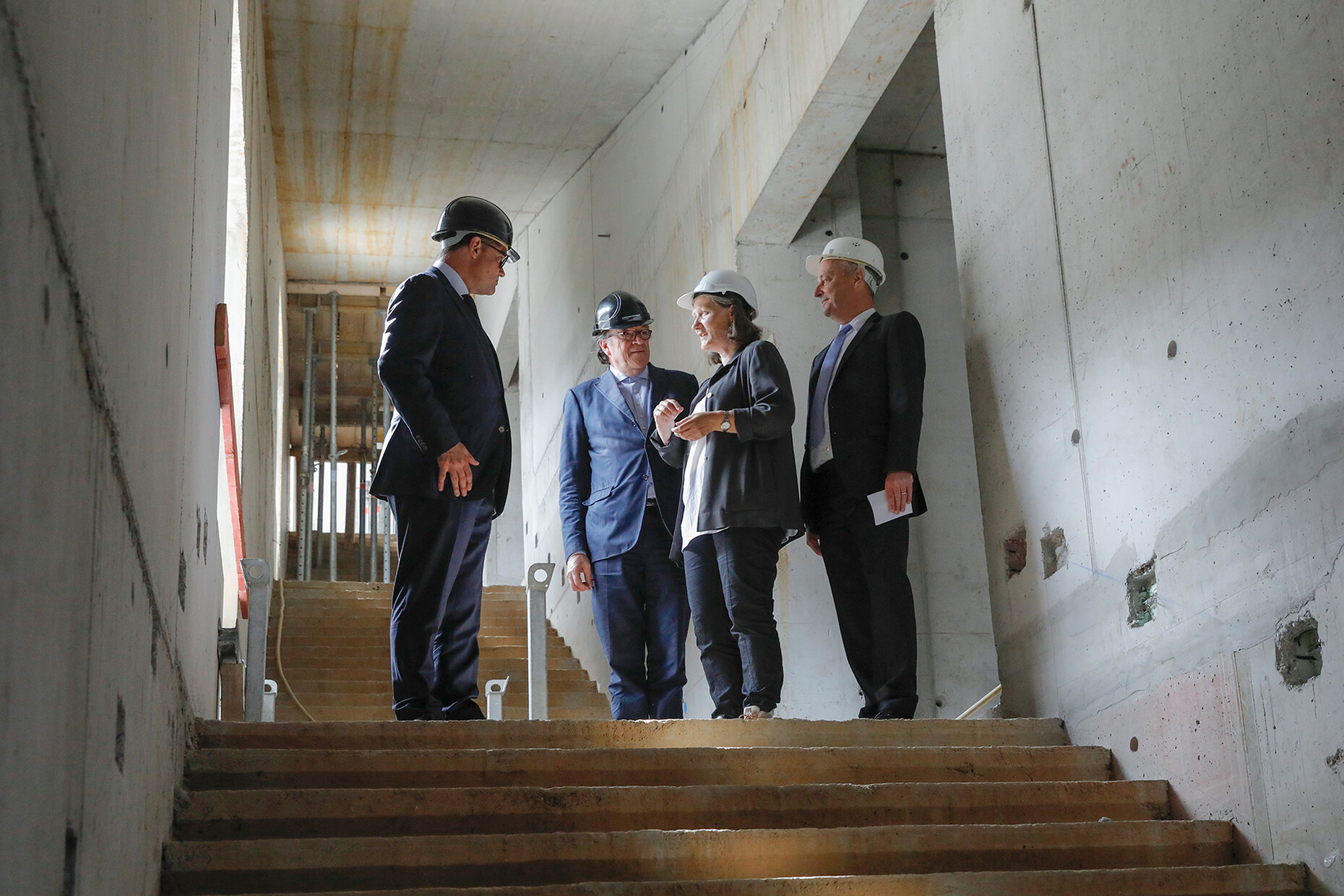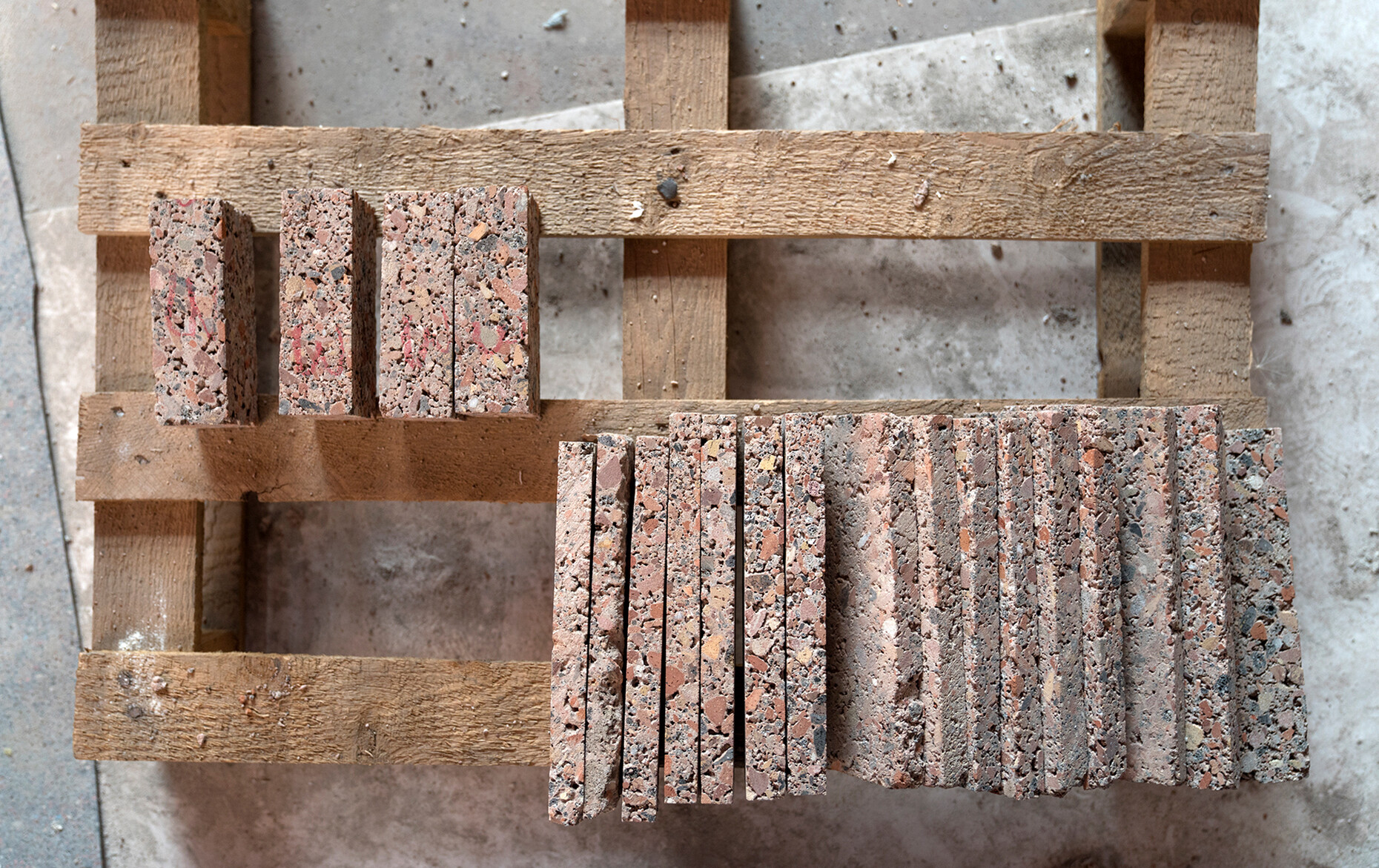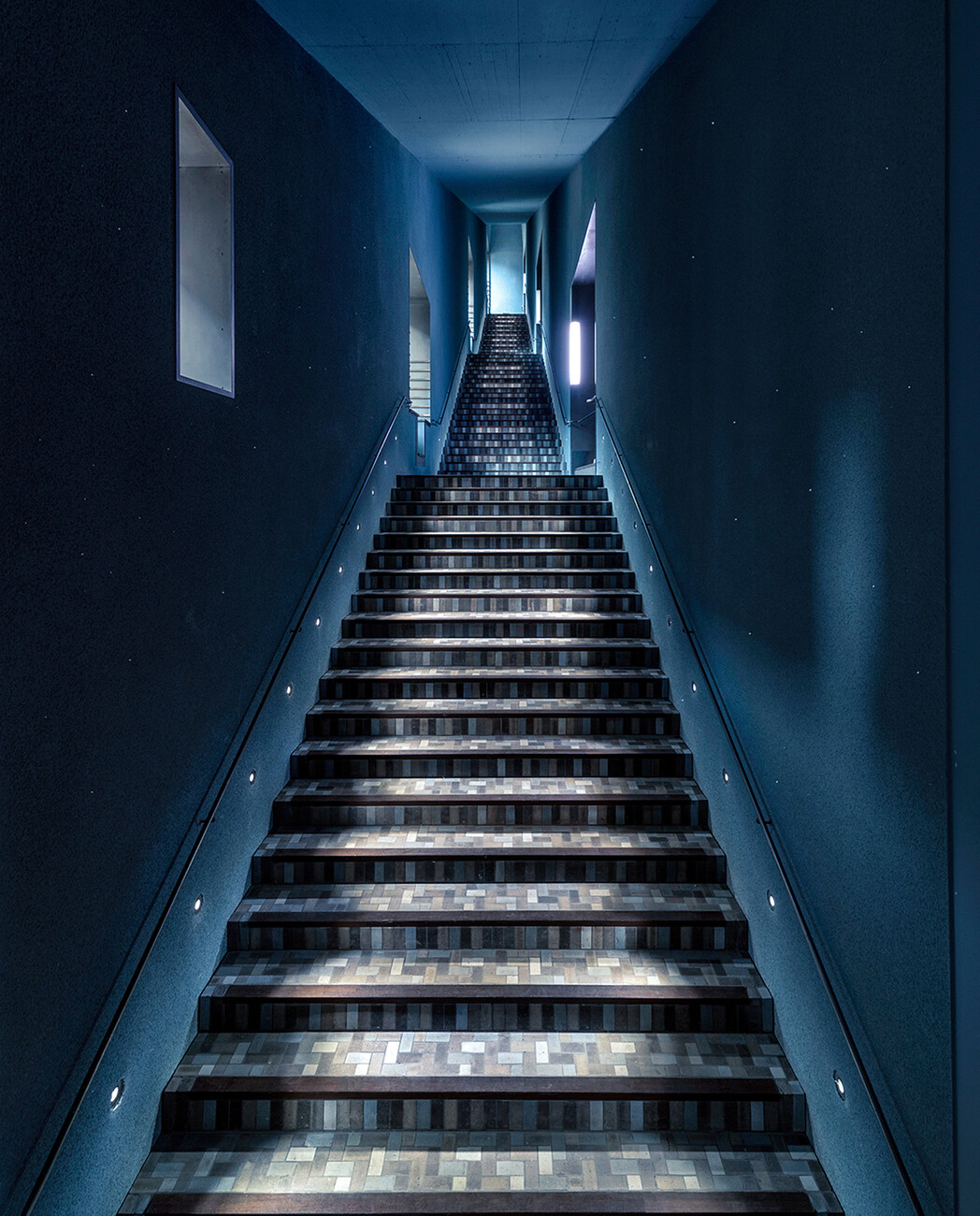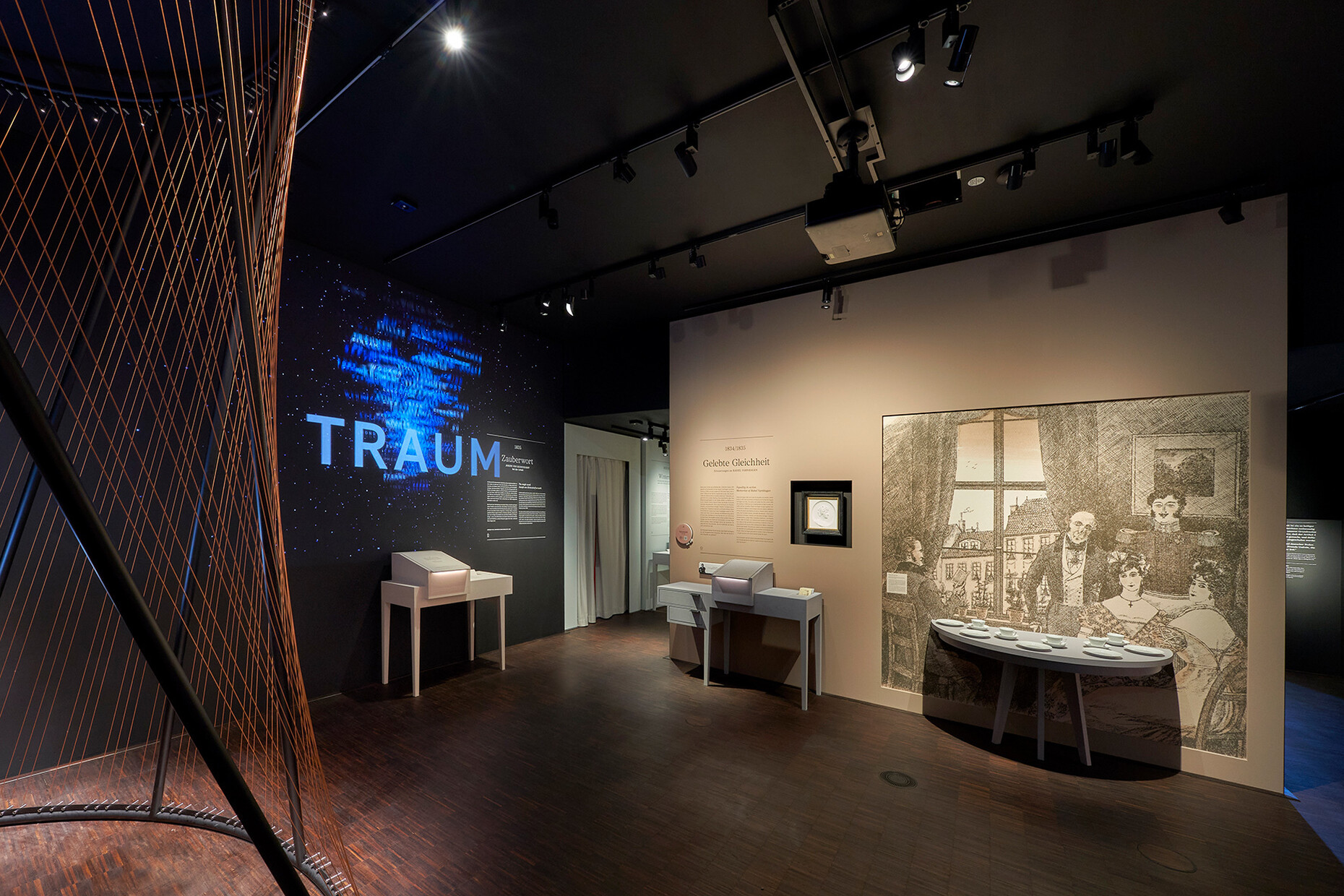Built desire
The world must be romanticised. That is how one finds the original meaning again. Romanticising is nothing but a qualitative potentiation. (...) By giving the common a high sense, the ordinary a mysterious appearance, the known the dignity of the unknown, the finite an infinite appearance, I romanticise it. (...) These lines are by Novalis aka Friedrich Freiherr von Hardenberg, one of the most important writers of German Romanticism, who wrote them down in his Fragments and Studies around 1797. Prof. Christoph Mäckler reads them out at the start of the tour of the new Deutsches Romantik-Museum, which will open in Frankfurt am Main on 14 September 2021. Making the common better, giving the familiar a new fascination, with a calm eye for the special detail and a sense for the effect of spaces on people, that's what he understands. His buildings are not "show-offs", no "event architecture" but buildings that fit in harmoniously - a building of value that wants to be a meaningful, long-lasting puzzle piece in the cityscape. And so the new building in Großer Hirschgraben next to the Goethe Haus seems made for its place. However, its special location also meant a great challenge, because an office building from the 1950s had previously stood here - wall to wall with the Goethe Haus building, which was rebuilt on the rubble after the war, and structurally connected to each other. Only with utmost caution and a lot of patience could the demolition of the uncharming building brick be realised.
In its place, a three-part building has now been created: "We didn't want to overwhelm the Goethe Haus with a new building. That's why we turned one house into three houses, three façades and three entrances to the entrance hall of the Deutsches Romantik-Museum, to the temporary exhibition and a vertical entrance for school classes to the art education rooms," explains Prof. Mäckler. The division of the façade into three parts, each with its own plaster structure, different window shapes, friezes and eaves heights in the transition to the slate roof loosens up the building and creates a new dynamic in the overall picture, giving the previously lifeless-looking alley a new glow. Like the façade typology itself, the colour scheme in soft yellow tones is based on the Goethe Haus, resulting in a smooth transition between old and new. The interplay with the architecture by Michael Landes, who, in addition to the urban planning concept, was responsible for the design of the Goethe courtyards, the Cantate Hall of the Volksbühne and the adjacent flats, also has a harmonious effect. In addition, a tunnel structure on the garden wall of the Goethe Haus connects the rooms of the temporary exhibition with the magazine in the basement rooms of the Freies Deutsches Hochstift.
Connecting fragments
The fact that Prof. Christoph Mäckler appreciates the history of the city and its buildings and is intensively involved with it is evident from a special detail as soon as you enter the museum: the flooring in the two-storey foyer is made of stones from the demolished house, prepared by the Trümmerverwertungsgesellschaft, a non-profit company that recycled the rubble after the war to rebuild Frankfurt. Thanks to the different types of stone, the floor now looks like terrazzo. The walls of the foyer are also worth a second look, because the concrete has been given a natural look with small natural stones in different mixtures as well as pigments that refer to the location. In some places, the concrete was worked with a hammer until the natural stone emerged. In the interplay with the firewall of the Goethe Haus, the surfaces are thus in harmony with each other - all are interwoven with the site and a piece of the city's history. "The materiality and the colourfulness of buildings have a great influence on the sense of well-being in the space," says Mäckler.
Part of the well-being in the room is daylight, which in the case of the Deutsches Romantik-Museum is also an enemy of the sensitive exhibits, which would quickly be damaged by UV radiation and high lux values. So how do you build a museum that basically must not allow any light without turning it into a windowless bunker? The solution is found in the course of the main staircase, which has its place behind the street façade of the building. Three large windows are thus located at the level of the entrances to the permanent exhibitions alone; in addition, there is a dormer window, three bay windows and two blind windows, among others. The exhibits, on the other hand, are sheltered in the rooms leading from the staircase to the courtyard, for which atelier deLuxe devised a lighting concept that creates a calm atmosphere and provides orientation. The staircase itself is one of the highlights of the building and bears the name "stairway to heaven" with good reason: Bathed entirely in dark blue, it gives the illusion of infinity. Its shape tapers upwards, the lights and entrances to the exhibition rooms become smaller. The scratched plaster on the walls of the staircase further enhances the effect of depth. Illusion as an important component of romanticism is thus given a reference in architecture. In general, Mäckler draws a line to the museum's theme with many architectural elements: "It is a very romantic building because it speaks to our romantic narrative. We wanted this support from the architecture, and it has been wonderfully successful," says the chief curator and director of the Freies Deutsches Hochstift, Prof. Dr. Anne Bohnenkamp-Renken. The permanent exhibition offers 35 interdisciplinary stations, each of which was developed from an object in the extensive collection of the Deutsches Hochstift. They are arranged chronologically, sometimes narratively, sometimes explanatorily, and many of them are related to each other. The form of the presentation is multimedia.
A special feature of the museum is its bay windows, which offer visitors the opportunity to take a moment out of the show, both mentally and physically, to reflect on what they have seen. On the other hand, they are the icing on the cake for the character of the building. On the first floor, for example, there is a pergola opposite the fire wall that picks up on the history of the Goethe Haus. A sensual experience is the "blue bay window", which stretches pointedly out of the façade into the street space. It is covered with many small panes of glass in different shades of blue, which make it glow wonderfully in the incident sunlight and refer to the sentence "The romantic is therefore a perspective or rather the colour of glass" from the second part of the novel Godwi by Clemens Brentano. "The bay window is a fantastic element that allows me to step into the street space, to be able to experience it and yet I am protected to be in my warm living space. It is a building block in architecture that is incredibly important," says Mäckler. Bright blue as the colour for numerous ceilings as well as walls and not least for the glass of the bay window also refer to the "blue flower", a central longing symbol of romanticism for love and the infinite.
But what does romance mean, as a concept, as a feeling, in the past and today? And what questions did the Romantics pursue? The answer to this is multi-faceted, because the epoch encompasses a wide range of topics: From white and black Romanticism, from Goethe to kitsch. It is hardly possible to summarise this spectrum in one exhibition. Even the cultural philosopher Friedrich Schlegel wrote to his brother August Wilhelm in 1797 "I cannot send you my explanation of the word Romantic well, because it is - 125 sheets long." Enlightenment and dream, illusion and reality are always close together in Romanticism. Nevertheless, the show manages to provide a diverse insight on 1,200 square metres of exhibition space and 400 square metres for temporary exhibitions. At the same time, it offers visitors numerous points of reference from which they can choose. The exhibits are divided thematically: The first floor is dedicated as a Goethe Gallery to the numerous paintings of the poet prince, the second floor shows manuscripts from the Schlegl brothers to Joseph von Eichendorff, while the third floor is dedicated to the question of the extent to which Romanticism continues to have an effect today. Arranged chronologically, the individual art genres can be experienced - from paintings and prints to porcelain painting, from letters to compositions by Robert Schumann to a "Lorenzo box", a symbol of friendship from 1769. The exhibition naturally integrates Goethe's life's work, including various stations on his scientific and psychological research as well as on the effect of colours. In parallel, a Faust-Gretchen trail runs through the museum and finds its central point in the garden as a sculpture. "The exhibition offers visitors the opportunity to set out on their own and explore what Romanticism is for them - we don't predefine it," says Bohnenkamp-Renken.
That a lot of work has gone into the museography of Petra Eichler and Susanne Kessler, alias "Sounds of Silence" and MESO Digital Interiors, is quickly apparent when you take a tour of the rooms. Every detail has been thought out for the benefit of the exhibits and their ideal reception - from the lighting to the specially designed display cases for the particularly sensitive works, which are protected with a hinged lid. The Deutsches Romantik-Museum is not only unique in the world, but also brings together many art-historical highlights in one place. The wealth of offerings can thus hardly be absorbed in a single day. "That is also the intention," says Anne Bohnenkamp-Renken, "we wanted to show the dazzling wealth of facets of the concept of Romanticism, which is not only an epoch but also an attitude and a feeling. In the process, it becomes apparent that the Romantics had to wrestle with similar conflicts as people today. Be it the loss and search for a meaning in being, the turning away from religion, the longing for a different reality or the creation of illusions and shared imaginary spaces to escape the world. The exhibition thus also encompasses the aberrations and abysses of the search for new meaning, which sometimes led to hostility towards Jews and nightmarish scenes that focus on evil, human madness and the erotically charged longing for death, such as "der Nachtmahr" by Johann Heinrich Füssli, a famous motif of Black Romanticism. The way the exhibits are presented is exemplary and multimedia-based. For example, it traces Goethe's life in an interactive map, offers transcriptions of the small-format manuscripts that would otherwise be almost impossible to decipher and many multimedia offerings that appeal to different target groups. The connections between the stages can thus be grasped well, in keeping with the Novalis quote: "To romanticise the world is to perceive it as a continuum in which everything is connected to everything else. It is only through this poetic act of romanticisation that the original totality of the world becomes foreseeable and communicable as its actual meaning in the work of art."
The realisation of the Deutsches Romantik-Museum took ten years, and there were quite a few hurdles - from archaeological finds to the complicated financing of the project, whose budget of 12 million euros barely covered the costs of the building and could hardly have been realised without private donations from the citizens. The effort was more than worth it, because in the end the romantic vision of a museum jewel has not become an illusion but a reality worth seeing.
Frankfurt Goethe-Haus & Deutsches Romantik-Museum
Tuesday, Wednesday, Friday, Saturday, Sunday 10 a.m. to 6 p.m.
Thursday 10 a.m. to 9 p.m.
Monday closed
Tip: The photographer Alexander Paul Englert has continuously accompanied the construction of the Deutsches Romantik Museum. The "Images of a Construction Site" can be seen in the Arcade Hall of the Goethe-Haus until 31 December 2021.
